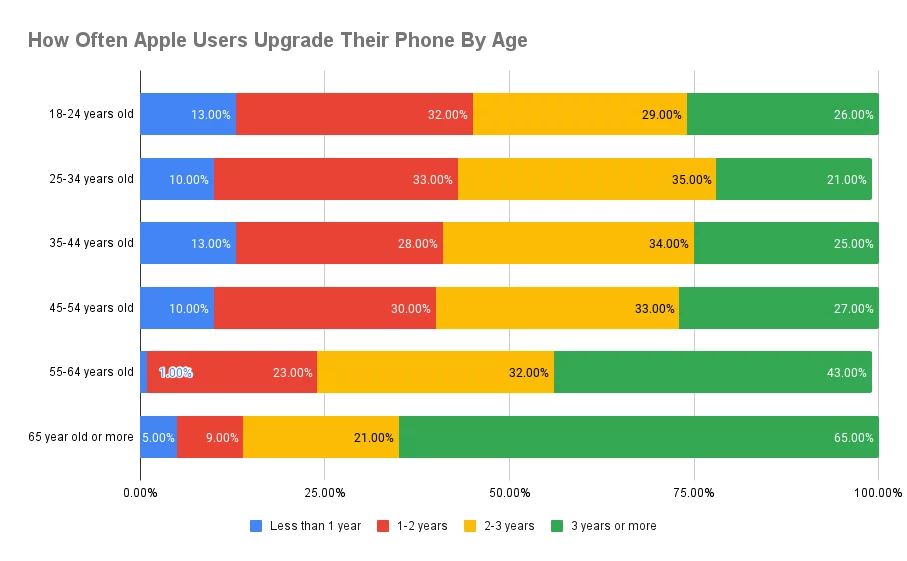In the fast-paced world of consumer electronics, smartphone brands release new models annually—each boasting better cameras, faster processors, or sleeker designs. Walk into a tech store in September (when Apple typically launches new iPhones) or early spring (for flagship Android devices), and you’ll see long lines of people eager to get their hands on the latest gadget. This scene raises a common question: Do people really replace their smartphones every year? The answer varies widely, as the choice depends on personal finances, device needs, and attitudes toward technology and consumption—not just a desire to own the “newest” thing.

Why Some People Choose to Replace Phones Annually
For a small but noticeable group, annual smartphone upgrades are a routine. Three key factors drive this choice: rapid tech innovation, consumer culture, and convenient trade-in policies.
First, annual tech upgrades appeal to users who rely on cutting-edge features for work or hobbies. Professional photographers, for example, may need the latest camera technology—like a 50MP sensor or improved low-light performance—to capture high-quality shots for clients. Gamers might crave a new phone’s faster chip (such as Qualcomm’s latest Snapdragon processor) to run graphics-heavy games without lag. For these users, a new phone isn’t a luxury; it’s a tool that helps them perform better at their jobs or enjoy their passions fully. Brands capitalize on this by highlighting incremental but impactful improvements each year, making older models feel “outdated” to those who need top-tier performance.
Second, consumer culture and social influence play a role. Social media often amplifies the appeal of new devices: influencers post unboxing videos, friends show off their new phone’s design, and ads frame annual upgrades as a way to “stay current.” For some people, owning the latest smartphone becomes a status symbol—a subtle way to signal that they can afford new technology or keep up with trends. This is especially common among younger users, who may feel pressure to match their peers’ devices or avoid being seen with a “last year’s model.”
Third, trade-in programs make annual upgrades more accessible. Brands like Apple, Samsung, and Google offer generous trade-in deals: if you trade your old phone (in good condition), you can get hundreds of dollars off a new one. For example, Apple’s iPhone Upgrade Program lets users pay a monthly fee to get a new iPhone every year, without having to pay the full price upfront. These policies lower the financial barrier to annual upgrades, turning a large one-time cost into a manageable expense for many.
Why Most People Don’t Replace Phones Annually

Despite these incentives, most people do not replace their smartphones every year. Three practical reasons explain this: cost, device durability, and environmental concerns.
Cost is the biggest barrier. Flagship smartphones now cost \(1,000 or more—an expense that’s hard to justify annually for most households. A 2023 survey by Consumer Reports found that the average U.S. smartphone user keeps their device for 2.8 years. For a family of four, replacing four phones every year would cost \)4,000 or more—money that could go to rent, groceries, or savings instead. Even with trade-in deals, the annual cost (often \(30–\)50 per month) adds up over time, leading many to ask: “Is the new model really worth the extra expense?”
Second, modern smartphones are built to last. Most devices have durable screens (like Gorilla Glass), long-lasting batteries (that can be replaced by professionals), and software support that lasts 3–5 years (e.g., Apple’s iOS updates or Samsung’s One UI updates). A 2022 iPhone 14, for example, can still run the latest apps, take great photos, and handle daily tasks (like texting, browsing, or video calls) in 2024—two years after its release. Many users find that their old phones work just fine; they only upgrade when the device breaks (e.g., a cracked screen that can’t be fixed) or no longer meets their needs (e.g., insufficient storage for work files).
Environmental concerns also discourage annual upgrades. Smartphones contain rare metals (like cobalt and lithium) and plastics that are harmful to the environment if not recycled properly. The United Nations estimates that 50 million metric tons of electronic waste (e-waste) are produced each year—with smartphones being a major contributor. Many users now choose to keep their phones longer to reduce their carbon footprint. Some even repair their old phones (e.g., replacing a worn battery) instead of buying new ones, as a way to be more eco-friendly.
The Rational Choice: Upgrade When You Need To
The question “Do you replace your smartphone every year?” doesn’t have a “right” answer—it depends on what you value. If you’re a professional who needs the latest features, or if you can afford the cost and don’t mind contributing to e-waste, annual upgrades might make sense. But for most people, keeping a phone for 2–3 years (or longer) is a smarter choice: it saves money, reduces environmental harm, and avoids unnecessary consumption.
The key is to upgrade based on need, not hype. Ask yourself: Does my current phone still work for daily tasks? Can I fix it (e.g., replace the battery) to extend its life? Will the new model’s features actually improve my life? If the answer to these questions is “yes” for your current phone, there’s no need to upgrade. In a world where brands push us to buy more, choosing to keep a phone longer is a small but powerful way to make a rational, intentional decision.
Conclusion
While some people do replace their smartphones every year—driven by tech needs, social pressure, or convenient trade-in deals—most do not. The majority of users keep their devices for nearly three years, motivated by cost savings, device durability, and environmental awareness. Ultimately, the choice to upgrade annually is personal, but it’s important to look beyond marketing and trends to what truly matters: a phone that works for you, at a price you can afford, with minimal harm to the planet.
